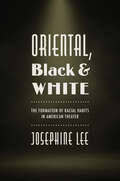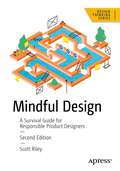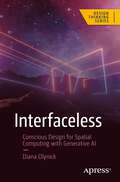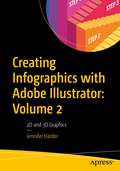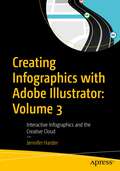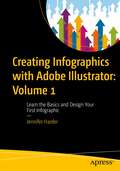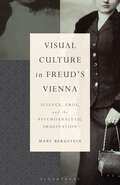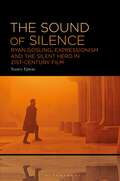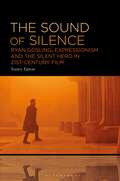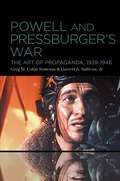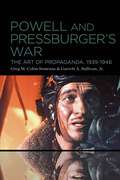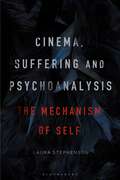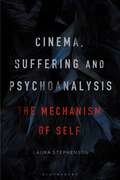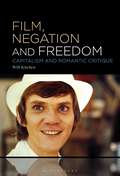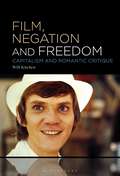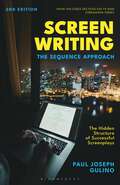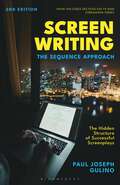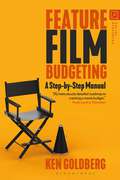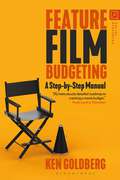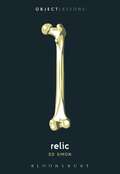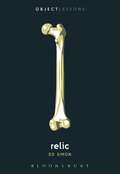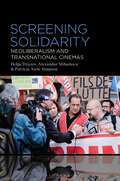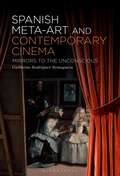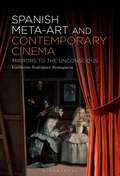- Table View
- List View
Oriental, Black, and White: The Formation of Racial Habits in American Theater
by Josephine LeeIn this book, Josephine Lee looks at the intertwined racial representations of nineteenth- and early twentieth-century American theater. In minstrelsy, melodrama, vaudeville, and musicals, both white and African American performers enacted blackface characterizations alongside oriental stereotypes of opulence and deception, comic servitude, and exotic sexuality. Lee shows how blackface types were often associated with working-class masculinity and the development of a nativist white racial identity for European immigrants, while the oriental marked what was culturally coded as foreign, feminized, and ornamental. These conflicting racial connotations were often intermingled in actual stage performance, as stage productions contrasted nostalgic characterizations of plantation slavery with the figures of the despotic sultan, the seductive dancing girl, and the comic Chinese laundryman. African American performers also performed common oriental themes and characterizations, repurposing them for their own commentary on Black racial progress and aspiration. The juxtaposition of orientalism and black figuration became standard fare for American theatergoers at a historical moment in which the color line was rigidly policed. These interlocking cross-racial impersonations offer fascinating insights into habits of racial representation both inside and outside the theater.
Mindful Design: A Survival Guide for Responsible Product Designers (Design Thinking)
by Scott RileyLearn to create seamless designs backed by a responsible understanding of the human mind. This new edition is fully updated and reworked to employ a realistic, challenging, and practical approach to interface design, presenting state of the art scientific studies in behavioral sciences, interface design and the psychology of design. All with modern, up-to-date examples and screenshots. The practical portion of this edition has been completely reworked, giving you the chance to follow along with a real, proven design process that has produced several successful products imbued with the principles of mindful, responsible design.You'll examine how human behavior can be used to integrate your product design into lifestyle, rather than interrupt it, and make decisions for the good of those that are using your product. You will also learn about the neurological aspects and limitations of human vision and perception; about our attachment to harmony and dissonance; and about our brain’s propensity towards pattern recognition and how we perceive the world around us. In the second half of the book, you’ll follow along with the key phases of a design project, implementing what you have learned in an end-to-end, practical setting. Design is a responsibility, but not enough designers understand the human mind or the process of thought. Mindful Design, Second Edition introduces the areas of brain science that matter to designers, and passionately explains how those areas affect each human’s day-to-day experiences with products and interfaces, providing a battle-tested toolkit to help you make responsible design decisions. What You'll Learn Review how attention and distraction work and the cost of attentional switchingUse Gestalt principles to communicate visual groupingEnsure your underlying models make sense to your audienceUse time, progression, and transition to create a compositionCarefully examine controlling behavior through reductionist and behaviorist motivation concepts Apply the theoretical knowledge to practical, mindful interface design Who This Book Is For The primary audience for this book is professional designers who wish to learn more about the human mind and how to apply that to their work. The book is also useful for design-focused product owners and startup founders who wish to apply ethical thinking to a team, or when bootstrapping their products. The secondary audience is design students who are either studying a ‘traditional’ visual design course, or a UX/interaction design course who have a desire to learn how they might be able to apply mindful design to their early careers. Finally, a tertiary audience for this book would be tutors involved in teaching design, or peripheral, courses who may wish to incorporate its teachings into their lectures, workshops or seminars.
Interfaceless: Conscious Design for Spatial Computing with Generative AI (Design Thinking)
by Diana OlynickExplore the possibilities spatial computing and its integration with AI can provide beyond the confines of a traditional user interface. Spatial computing brings together physical and virtual worlds and systems. This book offers an insightful journey into harmonizing user-centered design with the vast potential of AI in spatial computing. You'll start by exploring key concepts and processes in relation to conscious design and traditional computer interfaces. You'll then be introduced to the Mindful Spatial Design Framework (MSDF) and the rapidly evolving world of generative AI and its potential to transform design processes.Once the key concepts are mastered, you'll start to put them into practice and see how to design, prototype, and test interfaceless systems and environments that are seamless and user-friendly. In doing so you'll consider topics such as functionality and aesthetics, as well as how AI can improve automation and testing. The book concludes by looking at ethical AI considerations and best practices as well as looking at next steps and future developments of spatial computing and interfaceless design. As these invisible interfaces become more prevalent, understanding the key principles of conscious design is pivotal. Interfaceless will expand your knowledge base in these areas. What You'll LearnIncorporate conscious design principles in spatial computing projects.Leverage AI to enhance UX in spatial contexts.Develop strategies to address design challenges as we move beyond physical interfaces.See how VR/XR apps, devices, and generative AI are rapidly changing how we perceive and interact with the digital realm.Who This Book Is ForUX/UI designers, developers, and tech enthusiasts eager to grasp the future of HCI.
Creating Infographics with Adobe Illustrator: 2D and 3D Graphics
by Jennifer HarderThis full-color book will teach you how to use Adobe Illustrator's various tools to create infographics, as well as basic page layouts for them. It focuses on Illustrator’s powerful graphing tools and 2D and 3D effects. How can an infographic or graph be altered and adapted to appear more engaging and still display your data accurately? What additional effects can be used on your infographic to produce the results you envision? In this second volume of Creating Infographics with Adobe Illustrator, you will learn the answers to all these questions. Author Jennifer Harder will walk you through creating basic infographics in Illustrator using Illustrator tools such as Graphing Tools as well as how to create 2D effects and 3D shapes with their related materials, including Symbols. Upon completing this volume, you will have an appreciation for how easy it is to design an infographic or graph to display your data and discover how rudimentary shapes and colors can be altered using patterns, as well as 2D and 3D effects, to enhance readability while conveying meaning to your audience. You will be able to use this knowledge to create your own infographics using Illustrator’s wide array of tools. What You Will Learn Use Illustrator’s Graphing Tools to create and modify basic charts or graphsWork with popular 2D effects to enhance your design in IllustratorCreate 3D Shapes using Materials and Symbols and modify your 3D GraphsExplore basic Image Trace and Perspective options in Illustrator Who This Book Is For Beginner-level designers and others who are interested in learning the process of creating infographics for their company, the classroom, for data visualization, an article in a magazine, or a webpage.
Creating Infographics with Adobe Illustrator: Interactive Infographics and the Creative Cloud
by Jennifer HarderThis full-color book, the third of three volumes, focuses on Adobe Illustrator’s SVG interactivity tools. How can an infographic be made more interactive for an audience? What additional Illustrator tools and Adobe applications can be used to enhance your infographic layout? In this final volume of Creating Infographics with Adobe Illustrator, you will learn the answers to all these questions. Author Jennifer Harder will walk you through creating basic infographics in Illustrator using Illustrator tools for creating SVG files, known as Scalable Vector Graphics, for basic Interactivity on a web page. Then you will review layouts in other Adobe Applications in relation to their connectivity with Illustrator. Upon completing this volume, you will have a thorough understanding of how to design an infographic with basic interactivity for a web page, and how this can improve visualization and convey meaning to your audience. Moreover, you will be able to use this knowledge to create your own infographics using Illustrator’s wide array of tools. What You Will Learn Discover how to apply interactivity to an infographicGain insight into different infographic layouts and how to finalize your project with your clientExplore other Adobe Creative Cloud applications that may assist you in the future as you create your infographics Who This Book Is For Beginner-level designers and others who are interested in learning the process of creating infographics for their company, the classroom, for, an article in a magazine, or adding interactivity to webpage.
Creating Infographics with Adobe Illustrator: Learn the Basics and Design Your First Infographic
by Jennifer HarderThis full-color book will teach you how to use Adobe Illustrator's various tools to create infographics, as well as basic page layouts for them. This is the first of three volumes which will cover all the fundamentals of Illustrator, an industry standard application used by graphic designers and marketing and communication teams. How is an infographic different from a logo or any other illustration? What additional thought processes, skills, or software tools should be utilized to create an infographic? In this first volume of Illustrator Basics, you will learn the answers to all these questions. Author Jennifer Harder will walk you through creating basic infographics in Illustrator using Basic Shape tools, Pen Tools, Type Tools, and Symbols. Upon completing this volume, you will have an appreciation for how easy it is to design an infographic and discover how rudimentary shapes and colors can affect readability while conveying meaning to your audience. You will be able to use this knowledge to create your own infographics using Illustrator’s wide array of tools. Who This Book Is For Discover the tools within Illustrator that are ideal for creating basic infographicsDevelop a logo based upon a scanned sketchGain an understanding of different infographic layouts and the process of reviewing them with your client Who This Book Is For Beginner-level designers and others who are interested in learning the process of creating infographics for their company, the classroom, for a visual resume, an article in a magazine, or a webpage.
Visual Culture in Freud's Vienna: Science, Eros, and the Psychoanalytic Imagination (Psychoanalytic Horizons)
by Professor Emerit Mary BergsteinVisual Culture in Freud's Vienna shows how photography and film in turn-of-the-century Vienna (the birthplace of psychoanalysis) not only reflected modernist ideas already in force, but helped to bring into being what might be referred to as a “psychoanalytic imagination.”Mary Bergstein demonstrates that visual images not only illustrated, but also engendered ways of seeing social, psychological, and scientific ideas during a formative time in the creation and development of psychoanalysis and the modern age. Indeed, she argues that visual culture initiated significant aspects of psychoanalytic thought.Visual Culture in Freud's Vienna examines a variety of visual materials and texts, ranging from scientific illustrations to popular "low culture" and even forms of erotica, including film. Attention is also given to women's dresses and shoes in a social context and as they are represented in photography and circulated as fetish objects.Bergstein maintains a commitment to women's history and feminist inquiry throughout, particularly in her final chapter, which is devoted to the representations of women in the erotic photography and film. Visual Culture in Freud's Vienna is well illustrated with images drawn from the sources discussed and makes a significant contribution to our understanding of modernism and psychoanalysis.
The Sound of Silence: Ryan Gosling, Expressionism and the Silent Hero in 21st-Century Film
by Nancy EptonThe Sound of Silence explores how non-verbal communication in film, shown primarily through the acting of Ryan Gosling, provides an expressive space in which passive audience viewing is made more active by removing the expository signifier of dialogue. The German Expressionist era may have been brief, but the shadows cast since its end nonetheless loom large. The silhouetted, cigar-wielding men of film noir and their respectively dark, doom-laden haunts mirror the angst-inducing atmospheres of their forebearers, while also introducing the now-familiar figure of the silent hero. Considering the numerous silent hero actors in film history, there's one that stands out in the 21st century like no other: Ryan Gosling. His later career has seen some of the most iconic silent heroes of the past decade, with films such as Drive, Only God Forgives, Blade Runner 2049 and First Man cementing him as the go-to guy for a monosyllabic, taciturn and moody hero whose actions speak louder than words. This book argues that it is Gosling's expressive capabilities that keep audiences compelled by his performances. With the use of non-verbal silence – combined with its counterbalance, sound – a more active, emotive audience response can be achieved. Looking further into this idea through theorists such as Michel Chion and Susan Sontag, the book demonstrates that the sound of silence is one of the most meaningful cinematic sounds of all.
The Sound of Silence: Ryan Gosling, Expressionism and the Silent Hero in 21st-Century Film
by Nancy EptonThe Sound of Silence explores how non-verbal communication in film, shown primarily through the acting of Ryan Gosling, provides an expressive space in which passive audience viewing is made more active by removing the expository signifier of dialogue. The German Expressionist era may have been brief, but the shadows cast since its end nonetheless loom large. The silhouetted, cigar-wielding men of film noir and their respectively dark, doom-laden haunts mirror the angst-inducing atmospheres of their forebearers, while also introducing the now-familiar figure of the silent hero. Considering the numerous silent hero actors in film history, there's one that stands out in the 21st century like no other: Ryan Gosling. His later career has seen some of the most iconic silent heroes of the past decade, with films such as Drive, Only God Forgives, Blade Runner 2049 and First Man cementing him as the go-to guy for a monosyllabic, taciturn and moody hero whose actions speak louder than words. This book argues that it is Gosling's expressive capabilities that keep audiences compelled by his performances. With the use of non-verbal silence – combined with its counterbalance, sound – a more active, emotive audience response can be achieved. Looking further into this idea through theorists such as Michel Chion and Susan Sontag, the book demonstrates that the sound of silence is one of the most meaningful cinematic sounds of all.
Powell and Pressburger’s War: The Art of Propaganda, 1939-1946
by Professor Greg M. Semenza Garrett A. Sullivan Jr.A focused study on Michael Powell and Emeric Pressburger's cinematic contributions to the war effort, arguing for the centrality of propaganda to their work as film artists.Michael Powell and Emeric Pressburger are widely hailed as two of the greatest filmmakers in British cinema history. The release of their first movie, The Spy in Black, barely preceded the beginning of World War Two, and a number of their early masterworks, including The Life and Death of Colonel Blimp, A Canterbury Tale, and A Matter of Life and Death, were produced in the service of the war effort. Through exploring the relationship between art and propaganda, this book shows that Powell and Pressburger saw no contradiction between their aesthetic ambitions and their cinematic war work: propaganda imperatives were highly conducive to their objectives as both commercial cinema practitioners and artists.Drawing on production materials from the archives of the British Film Institute, this book charts three phases in Powell and Pressburger's wartime career: from first-time collaborators who strive to reconcile popular cinematic forms with developing notions of what constitutes effective propaganda; to accomplished, and sometimes controversial, propagandists whose movies center upon Britain's relations with its enemies and allies; to filmmakers whose responsiveness to the propaganda requirements of the late war is matched by a focus, shared by the Ministry of Information, on what the post-war future would bring.
Powell and Pressburger’s War: The Art of Propaganda, 1939-1946
by Professor Greg M. Semenza Garrett A. Sullivan Jr.A focused study on Michael Powell and Emeric Pressburger's cinematic contributions to the war effort, arguing for the centrality of propaganda to their work as film artists.Michael Powell and Emeric Pressburger are widely hailed as two of the greatest filmmakers in British cinema history. The release of their first movie, The Spy in Black, barely preceded the beginning of World War Two, and a number of their early masterworks, including The Life and Death of Colonel Blimp, A Canterbury Tale, and A Matter of Life and Death, were produced in the service of the war effort. Through exploring the relationship between art and propaganda, this book shows that Powell and Pressburger saw no contradiction between their aesthetic ambitions and their cinematic war work: propaganda imperatives were highly conducive to their objectives as both commercial cinema practitioners and artists.Drawing on production materials from the archives of the British Film Institute, this book charts three phases in Powell and Pressburger's wartime career: from first-time collaborators who strive to reconcile popular cinematic forms with developing notions of what constitutes effective propaganda; to accomplished, and sometimes controversial, propagandists whose movies center upon Britain's relations with its enemies and allies; to filmmakers whose responsiveness to the propaganda requirements of the late war is matched by a focus, shared by the Ministry of Information, on what the post-war future would bring.
Cinema, Suffering and Psychoanalysis: The Mechanism of Self
by Laura StephensonCinema, Suffering and Psychoanalysis explores psychological disorder as common to the human condition using a unique three-angled approach: psychoanalysis recognises the inherent suffering encountered by each subject due to developmental phases; psychology applies specific categorisation to how this suffering manifests; cinema depicts suffering through a combination of video and aural elements. Functioning as a culturally reflexive medium, the six feature films analysed, including Black Swan (2010) and The Machinist (2004), represent some of the most common psychological disorders and lived experiences of the contemporary era. This book enters unchartered terrain in cinema scholarship by combining clinical psychology's Diagnostic and Statistical Manual Five (DSM-V) to organise and diagnose each character, and psychoanalysis to track the origin, mechanism and affect of the psychological disorder within the narrative trajectory of each film. Lacan's theories on the infantile mirror phase, the Imaginary, and the Symbolic, Žižek's theories on the Real, the big Other and the Event, and Kristeva's theories on abjection and melancholia work in combination with the DSM's classification of symptoms to interpret six contemporary pieces of cinema. By taking into consideration that origin, mechanism, affect and symptomatology are part of an interconnected group, this book explores psychological disorder as part of the human condition, something which contributes to and informs personal identity. More specifically, this research refutes the notion that psychological disorder and psychological health exist as a binary, instead recognising that what has traditionally been pathologised, may instead be viewed as variations on human identity.
Cinema, Suffering and Psychoanalysis: The Mechanism of Self
by Laura StephensonCinema, Suffering and Psychoanalysis explores psychological disorder as common to the human condition using a unique three-angled approach: psychoanalysis recognises the inherent suffering encountered by each subject due to developmental phases; psychology applies specific categorisation to how this suffering manifests; cinema depicts suffering through a combination of video and aural elements. Functioning as a culturally reflexive medium, the six feature films analysed, including Black Swan (2010) and The Machinist (2004), represent some of the most common psychological disorders and lived experiences of the contemporary era. This book enters unchartered terrain in cinema scholarship by combining clinical psychology's Diagnostic and Statistical Manual Five (DSM-V) to organise and diagnose each character, and psychoanalysis to track the origin, mechanism and affect of the psychological disorder within the narrative trajectory of each film. Lacan's theories on the infantile mirror phase, the Imaginary, and the Symbolic, Žižek's theories on the Real, the big Other and the Event, and Kristeva's theories on abjection and melancholia work in combination with the DSM's classification of symptoms to interpret six contemporary pieces of cinema. By taking into consideration that origin, mechanism, affect and symptomatology are part of an interconnected group, this book explores psychological disorder as part of the human condition, something which contributes to and informs personal identity. More specifically, this research refutes the notion that psychological disorder and psychological health exist as a binary, instead recognising that what has traditionally been pathologised, may instead be viewed as variations on human identity.
Film, Negation and Freedom: Capitalism and Romantic Critique
by Will KitchenFilm, Negation and Freedom: Capitalism and Romantic Critique explores cinema in relation to the critical tradition in modern philosophy and its heritage in Romantic aesthetics. Synthesising a variety of discursive fields and traditions - including Early German Romanticism, Frankfurt School critical theory and the aesthetic philosophy of Jacques Rancière - Film, Negation and Freedom outlines a radical new approach to film by re-examining the work of Arthur Penn and Lindsay Anderson. A distinction between Light and Dark Romanticism is introduced as a means of interpreting cinema's relationship with capitalism, as well as dualistic concepts such as stillness and motion, passivity and activity, pain and pleasure. Film, Negation and Freedom revitalises our understanding of modern audio-visual media, as well as the aesthetic, philosophical and political conditions of Romantic subjectivity, artistic practice and spectatorship.
Film, Negation and Freedom: Capitalism and Romantic Critique
by Will KitchenFilm, Negation and Freedom: Capitalism and Romantic Critique explores cinema in relation to the critical tradition in modern philosophy and its heritage in Romantic aesthetics. Synthesising a variety of discursive fields and traditions - including Early German Romanticism, Frankfurt School critical theory and the aesthetic philosophy of Jacques Rancière - Film, Negation and Freedom outlines a radical new approach to film by re-examining the work of Arthur Penn and Lindsay Anderson. A distinction between Light and Dark Romanticism is introduced as a means of interpreting cinema's relationship with capitalism, as well as dualistic concepts such as stillness and motion, passivity and activity, pain and pleasure. Film, Negation and Freedom revitalises our understanding of modern audio-visual media, as well as the aesthetic, philosophical and political conditions of Romantic subjectivity, artistic practice and spectatorship.
Screenwriting: The Sequence Approach
by Professor Paul Joseph GulinoA substantial update of the previous edition, Screenwriting: The Sequence Approach deconstructs recent feature films and offers a new section analysing popular television series.A proven screenwriting method in emotionally engaging an audience, the sequence approach emphasises the underlying motives of each story plot to better convey its relation to the work as a whole. In this expanded second edition, Paul Gulino includes analyses of recent noteworthy films and serial dramas, such as Parasite, Barry and Breaking Bad, with an eye to how they manage audience attention, convey vital information and deliver their emotional payloads. The aim of the book is to help writers move readily from the feature film to the serial form, mastering both. It is perfect for both beginning writers and those with experience in the feature screenplay form.
Screenwriting: The Sequence Approach
by Professor Paul Joseph GulinoA substantial update of the previous edition, Screenwriting: The Sequence Approach deconstructs recent feature films and offers a new section analysing popular television series.A proven screenwriting method in emotionally engaging an audience, the sequence approach emphasises the underlying motives of each story plot to better convey its relation to the work as a whole. In this expanded second edition, Paul Gulino includes analyses of recent noteworthy films and serial dramas, such as Parasite, Barry and Breaking Bad, with an eye to how they manage audience attention, convey vital information and deliver their emotional payloads. The aim of the book is to help writers move readily from the feature film to the serial form, mastering both. It is perfect for both beginning writers and those with experience in the feature screenplay form.
Feature Film Budgeting: A Step-by-Step Manual
by Ken GoldbergFeature Film Budgeting: A Step-by-Step Manual is a step-by-step guide to film budgeting in the $600k to $6.5 Million range. Be it the film student, Line Producer, 1st Assistant Director, or script writer, all will benefit from the easy-to-follow steps on how to create a film budget. This book walks the reader through how to:- find current and future salary rates for every Hollywood Guild- determine Prep and Wrap periods for all crew members- navigate the Guild contracts for easy understanding- analyze salary rates and how they were arrived at- simplify the application of fringe rates (tax percentages). Additionally, sample budgets are presented to reinforce knowledge gained in each chapter through a comprehensive breakdown. Notably, this manual covers films budgeted in the $600,000 to $6.5 Million range. This allows the reader to focus and excel at those budget levels before moving on to higher budget levels.
Feature Film Budgeting: A Step-by-Step Manual
by Ken GoldbergFeature Film Budgeting: A Step-by-Step Manual is a step-by-step guide to film budgeting in the $600k to $6.5 Million range. Be it the film student, Line Producer, 1st Assistant Director, or script writer, all will benefit from the easy-to-follow steps on how to create a film budget. This book walks the reader through how to:- find current and future salary rates for every Hollywood Guild- determine Prep and Wrap periods for all crew members- navigate the Guild contracts for easy understanding- analyze salary rates and how they were arrived at- simplify the application of fringe rates (tax percentages). Additionally, sample budgets are presented to reinforce knowledge gained in each chapter through a comprehensive breakdown. Notably, this manual covers films budgeted in the $600,000 to $6.5 Million range. This allows the reader to focus and excel at those budget levels before moving on to higher budget levels.
Relic (Object Lessons)
by Dr. Ed SimonObject Lessons is a series of short, beautifully designed books about the hidden lives of ordinary things.Every culture, every religion, every era has enshrined otherwise regular objects with a significance which stretches beyond their literal importance. Whether the bone of a Catholic martyr, the tooth of a Buddhist lama, or the cloak of a Sufi saint, relics are material conduits to the immaterial world. Yet relics aren't just a feature of religion. The exact same sense of the transcendent animates objects of political, historical, and cultural significance.From Abraham Lincoln's death mask to Vladimir Lenin's embalmed corpse, Emily Dickinson's envelopes to Jimi Hendrix's guitar pick, relics are the objects which the faithful understand as being more than just objects. Material things of sacred importance, relics are indicative of a culture's deepest values. Object Lessons is published in partnership with an essay series in The Atlantic.
Relic (Object Lessons)
by Dr. Ed SimonObject Lessons is a series of short, beautifully designed books about the hidden lives of ordinary things.Every culture, every religion, every era has enshrined otherwise regular objects with a significance which stretches beyond their literal importance. Whether the bone of a Catholic martyr, the tooth of a Buddhist lama, or the cloak of a Sufi saint, relics are material conduits to the immaterial world. Yet relics aren't just a feature of religion. The exact same sense of the transcendent animates objects of political, historical, and cultural significance.From Abraham Lincoln's death mask to Vladimir Lenin's embalmed corpse, Emily Dickinson's envelopes to Jimi Hendrix's guitar pick, relics are the objects which the faithful understand as being more than just objects. Material things of sacred importance, relics are indicative of a culture's deepest values. Object Lessons is published in partnership with an essay series in The Atlantic.
Screening Solidarity: Neoliberalism and Transnational Cinemas
by Helga Druxes Alexandar Mihailovic Patricia Anne SimpsonWestern neoliberalism is a predatory outgrowth of late capitalism that overvalues competition, transferring the laws of the market to human relationships. This book advances the argument that anti-neoliberal cinemas of Europe, the United States, and the Russian Federation imagine and visualize alternatives to the non-sovereign realities of a neoliberal workplace that unequivocally endorses dangerous risk-taking, self-optimizing neoliberal subjects, and corporate 'entrepreneurs of self.' Always at stake in the examination of neoliberalism's consequences is a human being who is indexed by race, gender, nation, ability, and economic performance. Drawing on film theory, transnational social histories, critical race theory, and Marxist and Foucauldian interpretive models, this book rediscovers a cinema that imagines a social contract focused on the common good and ethical standards for the social state. Anti-neoliberal cinema empowers the viewer as agentive through narratives that detail resistance to Western neoliberal modes of living and working. These filmmakers dramatize the labor of making solidarity across different groups.
Screening Solidarity: Neoliberalism and Transnational Cinemas
by Helga Druxes Alexandar Mihailovic Patricia Anne SimpsonWestern neoliberalism is a predatory outgrowth of late capitalism that overvalues competition, transferring the laws of the market to human relationships. This book advances the argument that anti-neoliberal cinemas of Europe, the United States, and the Russian Federation imagine and visualize alternatives to the non-sovereign realities of a neoliberal workplace that unequivocally endorses dangerous risk-taking, self-optimizing neoliberal subjects, and corporate 'entrepreneurs of self.' Always at stake in the examination of neoliberalism's consequences is a human being who is indexed by race, gender, nation, ability, and economic performance. Drawing on film theory, transnational social histories, critical race theory, and Marxist and Foucauldian interpretive models, this book rediscovers a cinema that imagines a social contract focused on the common good and ethical standards for the social state. Anti-neoliberal cinema empowers the viewer as agentive through narratives that detail resistance to Western neoliberal modes of living and working. These filmmakers dramatize the labor of making solidarity across different groups.
Spanish Meta-Art and Contemporary Cinema: Mirrors to the Unconscious
by Guillermo Rodríguez-RomagueraCan cinema reveal its audience's most subversive thinking? Do films have the potential to project their viewers' innermost thoughts making them apparent on the screen? This book argues that cinema has precisely this power, to unveil to the spectator their own hidden thoughts. It examines case studies from various cultures in conversation with Spain, a country whose enduring masterpieces in self-reflexive or meta-art provide insight into the special dynamic between viewer and screen. Framed around critical readings of Miguel de Cervantes' Don Quixote, Diego Velázquez' Las meninas and Luis Buñuel's Un chien andalou, this book examines contemporary films by Víctor Erice, Carlos Saura, Bigas Luna, Alejandro Amenábar, Lucrecia Martel, Krzysztof Kieslowski, David Lynch, Pedro Almodóvar, Spike Jonze, Andrzej Zulawski, Fernando Pérez, Alfred Hitchcock, Wes Craven and David Cronenberg to illustrate how self-reflexivity in film unbridles the mental repression of film spectators. It proposes cinema as an uncanny duplication of the workings of the brain – a doppelgänger to human thought.
Spanish Meta-Art and Contemporary Cinema: Mirrors to the Unconscious
by Guillermo Rodríguez-RomagueraCan cinema reveal its audience's most subversive thinking? Do films have the potential to project their viewers' innermost thoughts making them apparent on the screen? This book argues that cinema has precisely this power, to unveil to the spectator their own hidden thoughts. It examines case studies from various cultures in conversation with Spain, a country whose enduring masterpieces in self-reflexive or meta-art provide insight into the special dynamic between viewer and screen. Framed around critical readings of Miguel de Cervantes' Don Quixote, Diego Velázquez' Las meninas and Luis Buñuel's Un chien andalou, this book examines contemporary films by Víctor Erice, Carlos Saura, Bigas Luna, Alejandro Amenábar, Lucrecia Martel, Krzysztof Kieslowski, David Lynch, Pedro Almodóvar, Spike Jonze, Andrzej Zulawski, Fernando Pérez, Alfred Hitchcock, Wes Craven and David Cronenberg to illustrate how self-reflexivity in film unbridles the mental repression of film spectators. It proposes cinema as an uncanny duplication of the workings of the brain – a doppelgänger to human thought.
